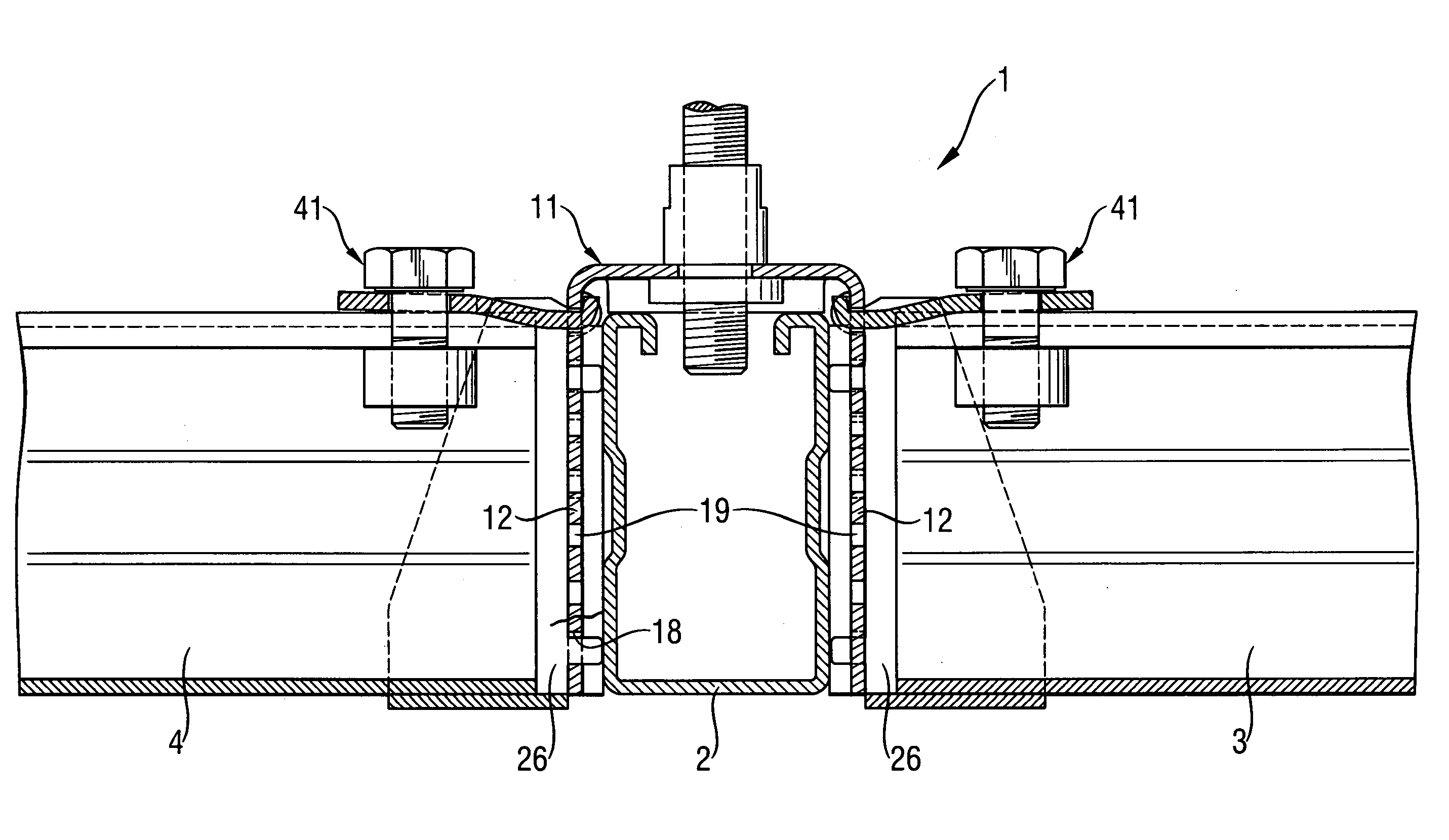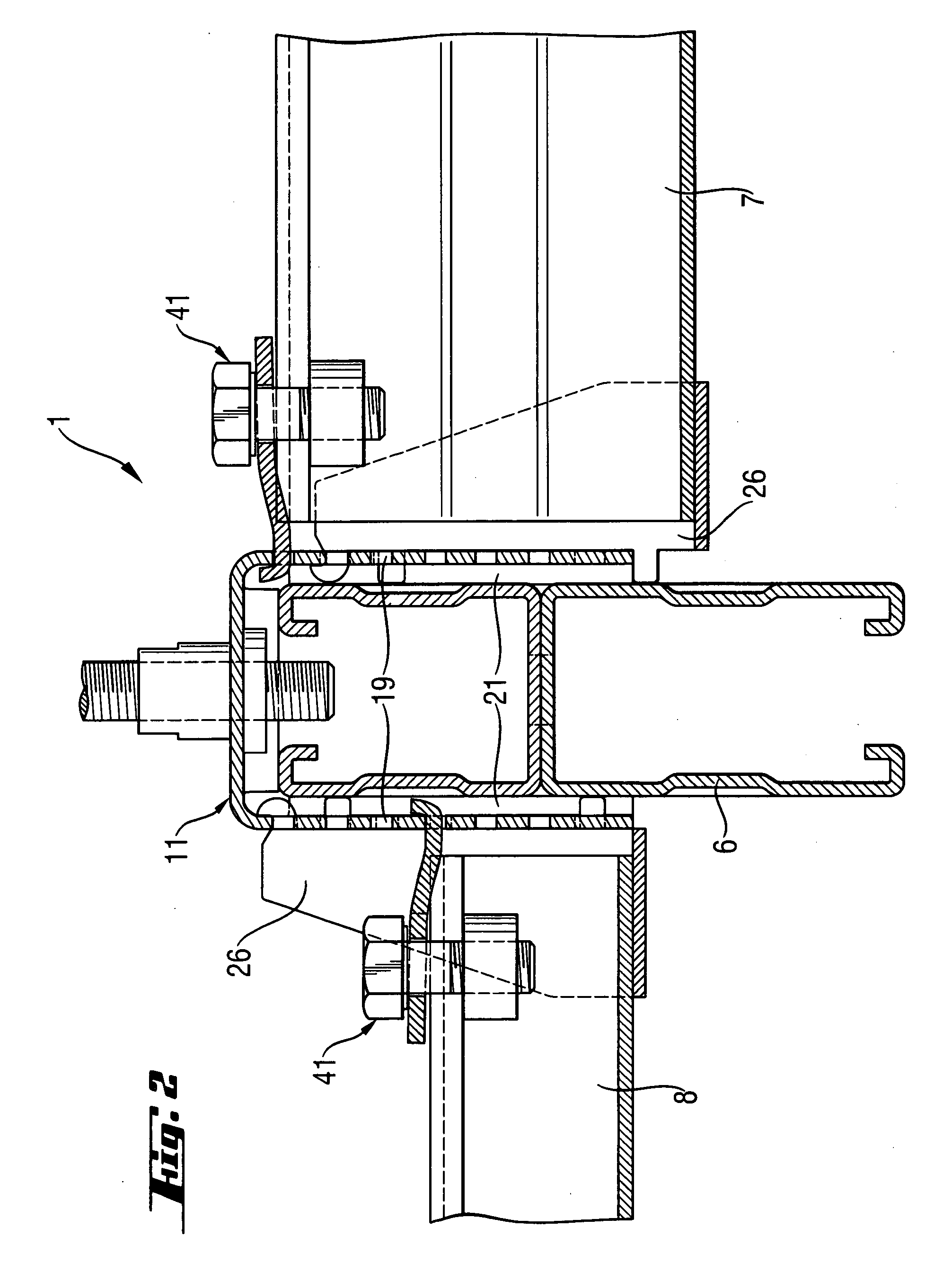Connection device for connecting mounting rails
a technology of connecting mounting rails and connecting devices, which is applied in the direction of rod connection, branching pipe, building components, etc., can solve the problems of large logistical expenses, high manufacturing costs, and different shapes of connecting devices, and achieves the effects of reducing material consumption, increasing reliability of connection, and small width
- Summary
- Abstract
- Description
- Claims
- Application Information
AI Technical Summary
Benefits of technology
Problems solved by technology
Method used
Image
Examples
Embodiment Construction
[0042] A connection device 1 for connecting two mounting rails 3 and 4 with mounting rail 2, which is shown in FIG. 1, includes an intermediate member 11, two receiving members 26, and securing elements 41 engageable in the intermediate member 11. All of the to-be-connected mounting rails 2, 3 and 4 have the same height.
[0043] A connection device 1 for connecting two mounting rails 7 and 8 with a mounting rail 6, which is shown in FIG. 2, likewise includes an intermediate member 11, two receiving members 26, and two securing elements 41 engageable in the intermediate member 11. In the arrangement shown in FIG. 2, the to-be-connected mounting rails 6, 7 and 8 have different heights. The receiving members 26 engage in receptacles 18 spaced by different distance with respect to the connection section of the intermediate member 11.
[0044] The intermediate member 11, which is show separately in FIGS. 3-4, has a U-shaped cross-section and two, arranged substantially parallel to each othe...
PUM
 Login to View More
Login to View More Abstract
Description
Claims
Application Information
 Login to View More
Login to View More - R&D
- Intellectual Property
- Life Sciences
- Materials
- Tech Scout
- Unparalleled Data Quality
- Higher Quality Content
- 60% Fewer Hallucinations
Browse by: Latest US Patents, China's latest patents, Technical Efficacy Thesaurus, Application Domain, Technology Topic, Popular Technical Reports.
© 2025 PatSnap. All rights reserved.Legal|Privacy policy|Modern Slavery Act Transparency Statement|Sitemap|About US| Contact US: help@patsnap.com



